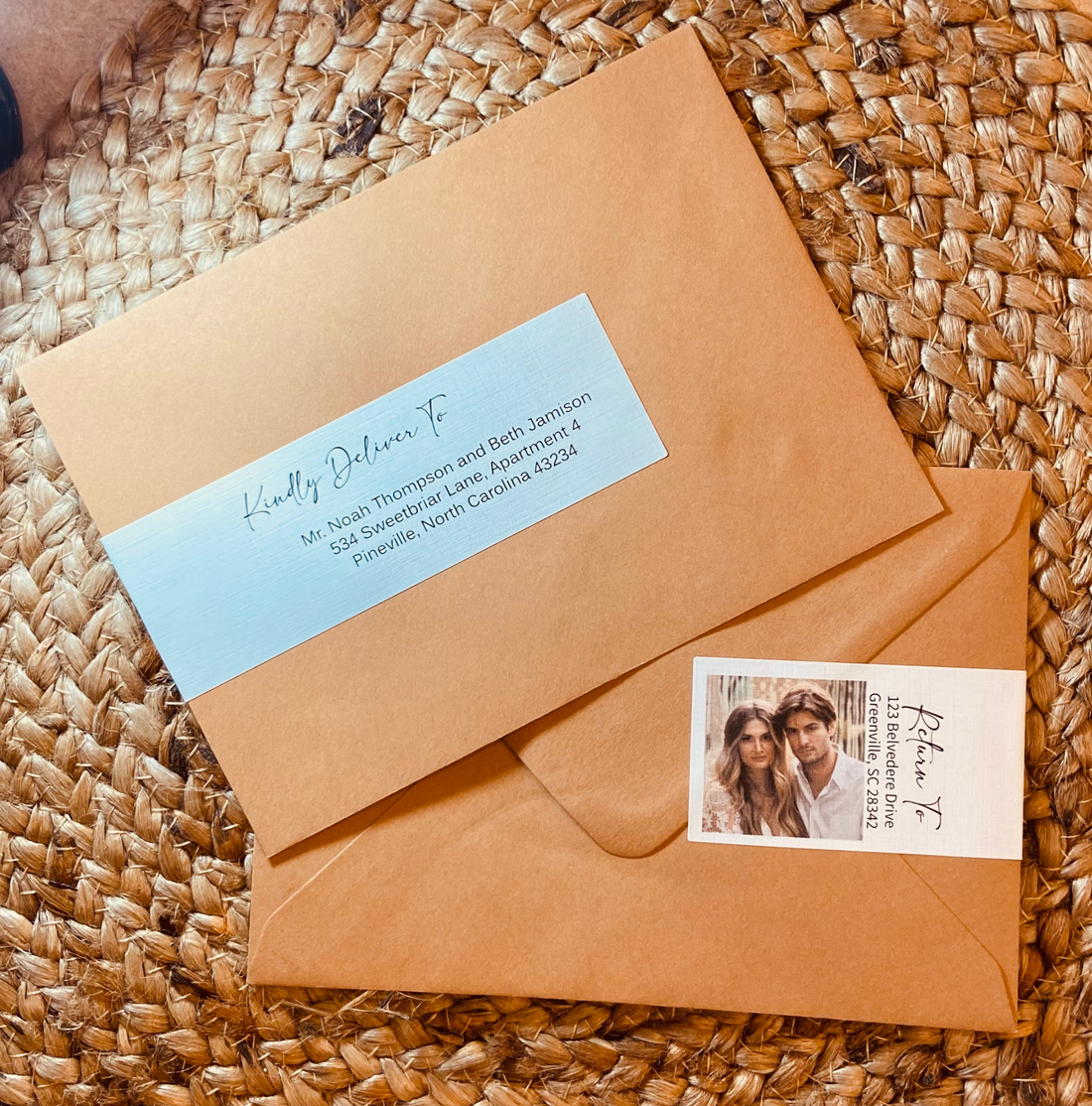Your wedding day is a celebration of love and commitment, and every detail matters. From the venue to the flowers to the stationery, each element contributes to creating a memorable experience for you and your guests. When it comes to wedding stationery, using Avery wraparound labels combined with mail merge can be a game changer, streamlining the process and ensuring a polished and professional result. Here’s why incorporating these tools into your wedding stationery workflow can make all the difference.
1. Efficiency and Time-Saving:
Wedding planning can be time-consuming, with countless tasks to manage and deadlines to meet. Avery wraparound labels and mail merge can significantly reduce the time spent on addressing envelopes for invitations, save-the-dates, and thank you cards. With mail merge, you can easily import your guest list from a spreadsheet or database, saving you the hassle of manually addressing each envelope. The wraparound labels provide a sleek and uniform look, giving your stationery a polished finish in a fraction of the time.
2. Consistency and Professionalism:
Consistency is key when it comes to wedding stationery. Using Avery wraparound labels ensures that each envelope is addressed neatly and uniformly, creating a cohesive look across all your stationery items. Whether you’re sending out invitations or thank you cards, your guests will be impressed by the attention to detail and professionalism of your stationery. With mail merge, you can also personalize each envelope with your guests’ names and addresses, adding a thoughtful touch that sets your wedding stationery apart.
3. Flexibility and Customization:
One of the advantages of using Avery wraparound labels and mail merge is the flexibility it offers in terms of design and customization. You can choose from a variety of label sizes, colors, and finishes to complement your wedding theme and aesthetic. With mail merge, you can also personalize each envelope with different fonts and formatting options, allowing you to tailor your stationery to suit your style. Whether you prefer a classic and elegant design or a modern and contemporary look, Avery wraparound labels and mail merge give you the freedom to create stationery that reflects your personality and vision.
4. Cost-Effectiveness:
Wedding expenses can add up quickly, but using Avery wraparound labels and mail merge can help you save money without compromising on quality. Instead of hiring a calligrapher or purchasing expensive custom-printed envelopes, you can achieve professional-looking results at a fraction of the cost. Avery wraparound labels are affordable and readily available, making them a budget-friendly option for couples looking to stick to their wedding budget without sacrificing style or elegance.
5. Stress-Free Wedding Planning:
Wedding planning can be stressful, but incorporating Avery wraparound labels and mail merge into your stationery workflow can help alleviate some of the pressure. By streamlining the addressing process and ensuring a consistent and professional result, you can focus on other aspects of wedding planning knowing that your stationery is in good hands. With Avery wraparound labels and mail merge, sending out your wedding stationery becomes a breeze, allowing you to enjoy the journey leading up to your big day.
In conclusion, Avery wraparound labels and mail merge are powerful tools that can elevate your wedding stationery game. From efficiency and consistency to flexibility and cost-effectiveness, these tools offer a myriad of benefits for couples looking to simplify their wedding planning process. By incorporating Avery wraparound labels and mail merge into your stationery workflow, you can achieve professional-looking results with ease, leaving you more time to savor the moments leading up to your happily ever after.

